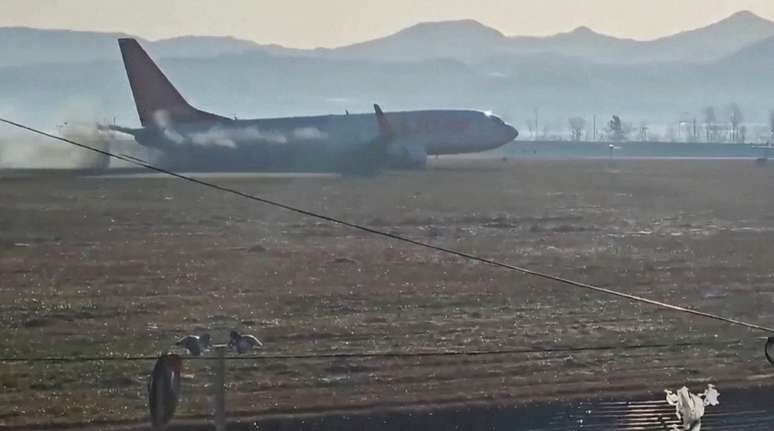Police investigators searched the offices of the airport manager and the aviation authority
South Korean police said Thursday they raided Jeju Air and the operator of Muan International Airport as part of the investigation into Sunday’s crash that killed 179 people in the country’s worst land-based air disaster.
Jeju Air flight 7C2216, which departed from Bangkok, the capital of Thailand, bound for Muan, in the south-west of South Korea, landed on its belly and overshot the runway of the regional airport, catching fire after hitting a wall.
Two crew members, who were sitting in the tail of the Boeing 737-800, were pulled alive by rescue teams. One of them was still in critical condition and the other was being treated for his injuries, a Transport Ministry official said.
The conversion of cockpit voice recorder data into audio files, which could provide important information about the final minutes of the flight, was completed on Thursday, Joo Jong-wan, vice minister of civil air transport, said at a news conference.
Police investigators searched the offices of the airport operator and the Ministry of Transportation’s aviation authority in southwestern Muan county, as well as Jeju Air’s office in Seoul, South Jeolla Province police said in a news release .
Investigators intended to seize documents and materials relating to the operation and maintenance of the plane, as well as the operation of airport facilities, a police official told Reuters.
The official also said police had banned Jeju Air CEO Kim E-bae and another unidentified official from leaving the country, calling them key witnesses who could be accused of causing deaths through negligence, which is punishable up to five years in prison or a fine. up to 20 million won ($13,600).
Jeju Air is cooperating with the police, the airline’s director, Song Kyeong-hoon, said at a news conference.
Questions from aviation safety experts about what led to the deadly explosion have focused on the wall, designed to support the “locator” antenna used to guide landings, which they say is too rigid and too close to the end of the runway.
“This rigid structure proved to be catastrophic when the plane skidded and impacted,” said Najmedin Meshkati, an engineering professor at the University of Southern California, adding that it was concerning that the navigation antenna was mounted on “such a formidable concrete, rather than the standard installation of metal towers/pylons.
Joo said the ministry was not yet able to provide clear details on the modernization plans at Muan Airport that led to the addition of the facility to support the navigation apparatus.
The ministry is carrying out an audit of tracking equipment at airports across the country, Joo said.
There is also an ongoing investigation into the Jeju Air flight, involving South Korean authorities and the US National Transportation Safety Board (NTSB), the Federal Aviation Administration (FAA) and the plane’s manufacturer, Boeing.
It is not yet known why the plane did not activate the landing gear and what prompted the pilot to rush into a second landing attempt after reporting to air traffic control that the plane had been hit by birds and declaring a ’emergency.
The plane’s flight data recorder, which sustained some damage, will be flown to the United States for analysis in cooperation with the NTSB.
Source: Terra
Rose James is a Gossipify movie and series reviewer known for her in-depth analysis and unique perspective on the latest releases. With a background in film studies, she provides engaging and informative reviews, and keeps readers up to date with industry trends and emerging talents.




![Un Si Grand Soleil preview: Thursday 16 October 2025 episode recap [SPOILERS] Un Si Grand Soleil preview: Thursday 16 October 2025 episode recap [SPOILERS]](https://fr.web.img6.acsta.net/img/23/e8/23e803cee5b560481303033f6e86fd7e.jpg)

